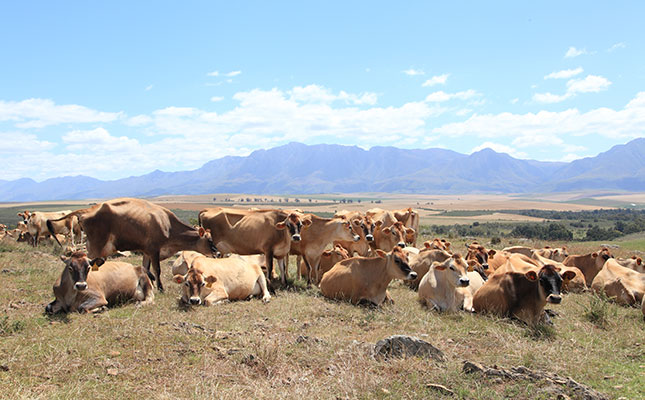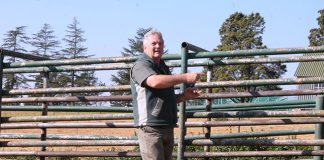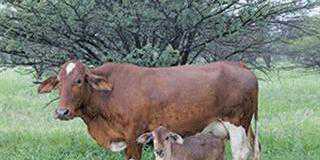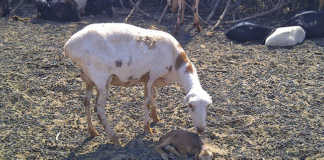
Photo: Glenneis Kriel
Recent years have seen a marked decline worldwide in the reproductive performance of dairy cows due to inappropriate selection, increasing herd sizes, poor management and suboptimal nutrition. And behind it all lies an unbalanced emphasis on milk yield.
This was according to Colleen Engelbrecht, a ruminant nutritionist at DSM Nutrition and Health, who was a speaker at the Dairy Management Consulting conference held in Durbanville, Western Cape, in August.
Engelbrecht explained that to alleviate the impact of low milk prices, dairy farmers have focused more and more on milk yield when selecting dairy genetics. Unfortunately, this
has been to the neglect of reproduction, longevity and health traits, and the result is that many animals end up being culled because of reproductive and fertility problems before they reach their third lactation and can start making money for the farm.
Engelbrecht stressed, however, that genetics are only part of the problem. Most reproductive problems occur because of poor management and “things that go wrong on the farm”.
She blamed this on “ever-increasing farm sizes” aimed at improved economies of scale.
“The drawback of these large herds is that farmers spend less time checking up on their animals because of their increasing management responsibilities, making them more reliant on the farm crew and technology to detect problems.
“Having larger herds also makes it more difficult to spot subclinical problems and prevent these from spiralling out of control. Prevention and early treatment is always the best option, as it’s cheaper, more effective and better for animal welfare than curative measures.”
Other culprits include inefficient heat detection, poor artificial insemination technique, low semen quality, disease risk, and, importantly, poor nutrition.
“The intercalving period is lengthened as a negative by-product of the above-mentioned practices, to the detriment of efficient lifelong production of cows,” she explained.
Diseases affecting fertility include metabolic diseases, such as ketosis and milk fever; reproductive disorders/diseases, such as dystocia (difficult calving, retained placenta, metritis, endometritis and mastitis); and non-reproductive disorders such as laminitis and diseases that reduce appetite in the transition period.
Poor nutrition
It is the problem of poor nutrition, however, that is Engelbrecht’s main focus, and she is the first to admit that developing a ration that addresses the requirements of a cow at different stages of production is far easier said than done.
She recalled that during one of her lectures at the University of the Free State, students identified more than 630 factors influencing the dietary requirements of a cow. This, she said, neatly illustrated the importance of consulting an animal nutritionist or dietician when developing rations for animals.

When formulating a ration, the nutritionist studies the requirements of the animals, and then establishes what is available on the farm and what has to be bought in to address these needs cost-effectively.
It is easy, she said, to blame feed specifications when problems occur, but poor nutrition is usually due to other factors, including how the feed is mixed and stored, changes in the nutritional composition of ingredients over time, feed bank management, and how the feed is presented to the cows and consumed.
For Engelbrecht, there are four golden rules governing good cow nutrition. The first is that there is no such thing as a free lunch; what you put in, you get out. You certainly cannot end up with more.
“Skimping on food will translate into nutritional deficiencies or shortages, or nutrient oversupply, which in turn will lead to health problems and negatively affect milk yield and reproduction,” she warned.
Secondly, when evaluating the efficiency of a feeding system, it does not help to focus on the ingredients, but on what has been left out.
“Any [errors], whether it’s the omission of an ingredient or a poor management practice, will catch up with you over time,” she said.
In all, 46 minerals play a role in cow nutrition, and a farmer is unlikely to see any difference in animal health if minerals are fed at 100% of the requirement.
“However, slight deficiencies, imbalances or other issues will result in reduced immunity, rendering animals more susceptible to disease. These diseases, unfortunately, are rarely [attributed] to nutritional problems.”
As the imbalance or deficiency increases, growth and fertility are also reduced.
“Unfortunately, mineral imbalances and deficiencies are usually only identified as a source of problems when it’s really late. Then it takes twice as long to fix them, and doing so is very expensive,” she explained.
Thirdly, feed analysis does not have to be 100% accurate.
“Many models and tools exist to inform the nutritional requirements of cows. The secret is to choose a system that works for your farm.”
And lastly, she added, this is no magic involved in the development of rations. Everything is based on mathematics and science.
Reproduction
Engelbrecht stressed that feeding has an impact on all aspects of reproduction, with both over- and underfeeding having a negative effect on ovulation, in turn resulting in fertility problems.
She added that good reproduction starts with the birth of a healthy calf once a year.
“For optimal returns, the ideal is a 305-day lactation, with a 60-day dry period in between.”
To achieve this, cows have to conceive between 60 and 85 days after calving, which coincides with the time they are at peak production.
“The challenge here is that body condition is at its lowest at this stage of production, as dry matter intake had not yet recovered. The cow, in effect, is in a negative energy curve, which means that body reserves have to be used to support ovulation,” she explained.
To determine whether or not a cow is in good condition, a farmer can use body condition scoring, which involves evaluating the tail head and loin areas of the animal according to a five-point scale. A cow with a deep cavity around the tail head and a bony loin area is too thin and will score 0.
At the other extreme, an animal with buried fat in the tail head and folds of fatty tissue in the loin, so that the bones are hidden, is grossly fat, and will score 5.
To ensure sufficient energy reserves, and in effect, good health and fertility, a cow should have a body condition of at least 3,5 when dry, and lose no more than one point during the first 60 days in milk. A cow that loses any more will reach only a third of her reproductive potential.
Another danger, explained Engelbrecht, is metabolic memory. A cow that is in poor condition for a long time will struggle to conceive even if she is fed well and achieves good condition again.
Foetal development
Engelbrecht said that while 70% of foetal growth occurs during late lactation, many farmers ‘neglect’ their cows during this period by sending them out to the veld and not giving additional feed or supplements to maintain their condition.
In addition, some farmers intentionally feed their cows less as they want small calves at birth to prevent complications. This approach usually backfires, however, as cows that are in good condition usually have fewer calving problems than those that are underfed or undernourished.
These practices also threaten foetal development, cautioned Engelbrecht.
“If the foetus doesn’t develop optimally and express normal patterns of organ and tissue development, including in the lung, brain, heart and reproductive organs, the quality and composition of those organs will change. A calf that’s neglected during foetal development won’t fulfil its full production potential and will never catch up with [the other calves]. No matter what’s done later during foetal development or after birth, the damage can never be fully corrected.”
Overfeeding during this stage will also take its toll on foetal development, she added. When cows are too fat, the foetus becomes ‘programmed’ to use nutrients at a different efficiency level. In effect, the calves will feed more greedily, have less muscle and more fat, and be inclined to develop diabetes.
Email Colleen Engelbrecht at [email protected].











